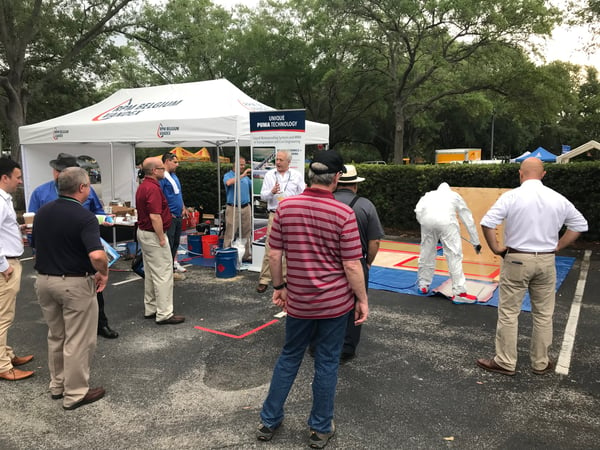
Last week, I attended the National Bridge Preservation Partnership Conference in Florida. This conference offers presentations from government agencies and industry on preservation technologies. The conference is tied to the AASHTO Transportation System Preservation (TSP-2) regional partnerships. The primary topics are overlays, waterproofing and joints since these are the maintenance issues that all DOT’s and agencies face.
FRP decking is not a big topic at this show since FRP decking is generally included in the new structures and bridge rehabilitation. But this conference is still helpful for FRP deck suppliers. As FRP continues to be used on more bridges and comfort/confidence grows in the bridge community, I get less questions about structural integrity. I often spend more time discussing the non-slip overlay and the panel joints than the structural properties. The FRP deck will last for 75 years; the next step is including the longest lasting overlays and joints. This conference keeps me current with the options and improvements in these areas. This conference included outdoor demonstrations of overlays and joints. Seeing the applications is always helpful.
One of the exhibitors and technology demonstrators with RPM Belgium whose Matacryl overlay product is what Composite Advantage uses on the top of our vehicle and pedestrian bridge decks. This system offers high elongation and many options for aggregates (size and color). The result is a long lasting, non-slip overlay. The Matacryl displays include FRP deck samples with the overlays. (I appreciated the extra attention for FRP.)
FRP technology did have its own session of presentations. Most of the presentations were on FRP strengthening of concrete structures. This reflects the fact that the FRP has become the industry standard for strengthening. One presentation was about an owner’s efforts to repair a poorly-designed FRP deck. The deck construction was screwing together FRP plates and sections. FRP does not have the thread strength required (which is why CA uses embedded steel for bolted joints.) Unfortunately, the owner had to remove the FRP since the supplier would not stand behind the product (and the supplier has since gone out of business.) When this happens to newer technology, it reflects poorly on the material. My comment after the presentation is that steel is good material, but it can be used in bad designs. FRP is a good material; and it was used in a bad design. People will hear about both successes and failures so attending information interchanges like this conference help to address any issues.

